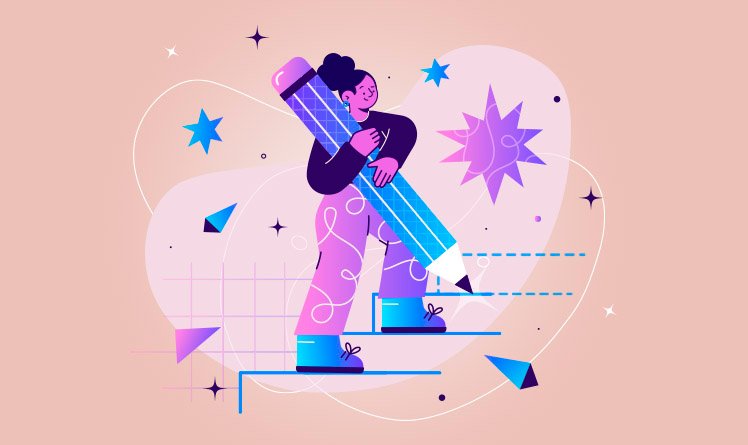Creative Visualization: How It Can Help You Achieve Your Goals

|
Getting your Trinity Audio player ready...
|
Have you ever imagined a different life—one that's lighter, more prosperous, more connected to who you truly are? Perhaps a future where you wake up inspired, work with purpose, and feel at peace with your own choices? This kind of scenario often seems distant, almost like a dream. But what if I told you that this mental image could be the real starting point for the transformation you desire?
Creative visualization is more than a technique. In this sense, it's a bridge between what you experience today and what you want to experience tomorrow. Throughout this article, we'll explore how to use this tool strategically and effectively to reprogram thoughts, change behaviors, and, most importantly, achieve goals with greater purpose and clarity.
What is creative visualization?
Creative visualization is a mental technique that uses active imagination to create mental images of desired goals, with the intention of manifesting them into reality. It's like mentally rehearsing the future you want to live. Thus, more than a simple daydream, it involves emotions, clear intention, and repetition.
In other words, creative visualization is the "mental rehearsal" of the reality you want to experience. So, imagine yourself achieving your goals in great detail: where are you? What are you doing? How do you feel? Consistent practice encourages your brain to work toward this scenario.
The Science Behind Creative Visualization
Creative visualization has scientific backing. Studies in neuroscience show that when you visualize an action with emotional intensity, your brain activates the same areas that would be activated if you were actually performing that action. This is the principle of neuroplasticity, our brain's ability to adapt.
So, what does this mean in practice? It means that when you visualize consistently and accurately, you train your brain to recognize opportunities, stay focused, and act in a way that aligns with what you desire. It's as if you're programming your nervous system for success.
“Creative visualization is a neuroscience-based technique that teaches the brain to act as if success is already happening—and that changes everything.”
How Creative Visualization Influences Your Mindset
Our mindset is shaped by the experiences we live—and, surprisingly, by the ones we intensely imagine. In this way, creative visualization creates an anticipated emotional experience of success, which reinforces the belief that achieving that goal is possible.
So, changing how you see yourself in the future changes how you act in the present. This breaks self-sabotaging patterns and activates a positive cycle: you believe in yourself more, act with more confidence, and the results begin to appear.
Reports on the use of creative visualization
Creative visualization is also widely used by elite athletes and influential figures as a strategic tool to improve performance and achieve goals. Ayrton Senna, for example, revealed in interviews that he used visualization before races to visualize each curve of the circuit, which increased his concentration and confidence. Olympic swimmer Michael Phelps also reported in his biography that he precisely visualized every movement of his races—from the jump to the final touch on the edge of the pool. Communication icon Oprah Winfrey has shared that she uses visualization as part of her daily practice to align her intentions with her actions. These examples reinforce that visualization is not just a mental technique: it is an internal preparation for manifesting excellence in the external world. It is an exercise in Life Design, which helps us achieve the life we want.
The role of NLP and neuroscience in creative visualization
NLP (Neuro-Linguistic Programming) uses creative visualization as a tool to create mental "anchors" and reprogram limiting patterns. Thus, when you visualize a new reality and associate it with a positive emotion, you are literally rewriting your internal narrative.
On the other hand, neuroscience explains this phenomenon through the formation of new neural pathways. By repeating a mental image, you strengthen these connections in the brain. This prepares the nervous system to recognize and respond to opportunities that lead to that goal.
The connection between mindfulness and creative visualization
Mindfulness and creative visualization are complementary practices that, when integrated, amplify each other's effects. While visualization focuses on the desired future, mindfulness anchors the mind in the present moment, creating a mental state of mindfulness and openness. This means that when practicing mindfulness before visualizing, you reduce mental agitation, improve your ability to focus, and intensify your emotional connection with the mental images you are creating. Furthermore, the state of presence cultivated by mindfulness allows visualization to occur with more clarity, intention and depth, making the exercise more effective and transformative.
You can also practice others types of meditation, in addition to the mindfulnessAfter all, this can help you stay more focused on your exercise.
“When combined with mindfulness, creative visualization not only gains more focus, but also deepens the emotional connection to goals.”
Applying Creative Visualization to Personal and Professional Goals
Want to lose weight, pass a public exam, start a business, or improve your relationships? Creative visualization is a tool that adapts to any area of life.
In a professional context, for example, you might imagine yourself confidently giving a lecture or signing your dream contract. In a personal context, you might visualize a moment of connection with your family, achieving emotional harmony.
The clearer, more emotional, and more repeated your visualization, the more your brain will understand that this is the "normal" path. And, therefore, the action will flow much more naturally.
Creative Visualization in Practice: Step by Step
Visualizing isn't simply imagining anything. There's a method to make it truly effective. Let's go:
- Choose a clear goal.
- Close your eyes and imagine yourself achieving that goal.
- Add sensory details: what do you see, hear, feel?
- Bring emotion to the scene: joy, relief, gratitude.
- Repeat this process daily for at least 5 minutes.
The secret lies in the consistency and clarity of the mental image. The more real it seems to your mind, the more it will believe it's possible.
Practical exercise: creating your future image
Find a quiet place. Close your eyes and take three deep breaths. Practice being present, always being kind to yourself, accepting the thoughts that arise. At this point, it's important to practice focusing on the exercise.
Now imagine you wake up on a perfect day. Where are you? What do you do? Who do you talk to? How do you feel?
See the colors, hear the sounds, feel the sensations in your body. Amplify all of this for a few minutes. Finally, tell yourself, "I am creating this reality, one step at a time." Repeat this exercise every day for a week. Finally, notice how your energy changes.
“The difference between those who achieve results with creative visualization and those who see no effect lies in the clarity of the mental image, the emotion involved, and constant repetition.”
What can sabotage your visualization without you realizing it
Visualizing without emotion is like trying to light a fire without fire. Likewise, doing the exercise mechanically, without connecting with the experience, will bring no benefit.
Another critical point is to let doubts creep in during visualization. If you imagine yourself achieving something but then immediately think, "That'll never happen to me," you're creating internal conflict. Therefore, it's important to practice mindfulness, where we can accept our thoughts, without conflict, replacing them with what we desire.
Visualizing in a generic way isn't effective either. Saying "I want to be happy" is too vague. Be specific: "I want to wake up every day energized, practice yoga, work on something I love, and return home peacefully."
Conclusion
Creative visualization isn't a magic trick, but a powerful, scientifically based tool for reprogramming your mind toward your goals. By integrating it into your routine, you're training your brain to believe, act, and achieve. Don't underestimate the power of guided imagination. The future you want begins in your mind.
Key questions and answers
1. What is creative visualization?
It is the practice of imagining, with detail and emotion, a goal already achieved, as a way of reprogramming the brain to achieve it in reality.
2. Does creative visualization really work?
Yes. It activates the same brain regions as when you live the actual experience, strengthening neural pathways and increasing your motivation to act.
3. How many times a day should I practice visualization?
It is recommended to do it once a day, for 5 to 10 minutes, consistently.
4. Can I use creative visualization for any purpose?
Yes. From personal to professional goals, the technique is versatile and adaptable.
5. What differentiates visualization from fantasizing?
Visualization requires clear intention, involved emotion, and conscious repetition. Fantasizing is passive; visualizing is an active act of mental creation focused on real results.
Image: Freepik

Marcel Castilho is an expert in neuromarketing, neuroscience, mindfulness and positive psychology. In addition to being an advertiser, he also has a Master's degree in NLP – Neurolinguistic Programming. As the owner and founder of the communications agency VeroCom and also of the digital agency Vero Contents, he has been studying human behavior for over 30 years.

